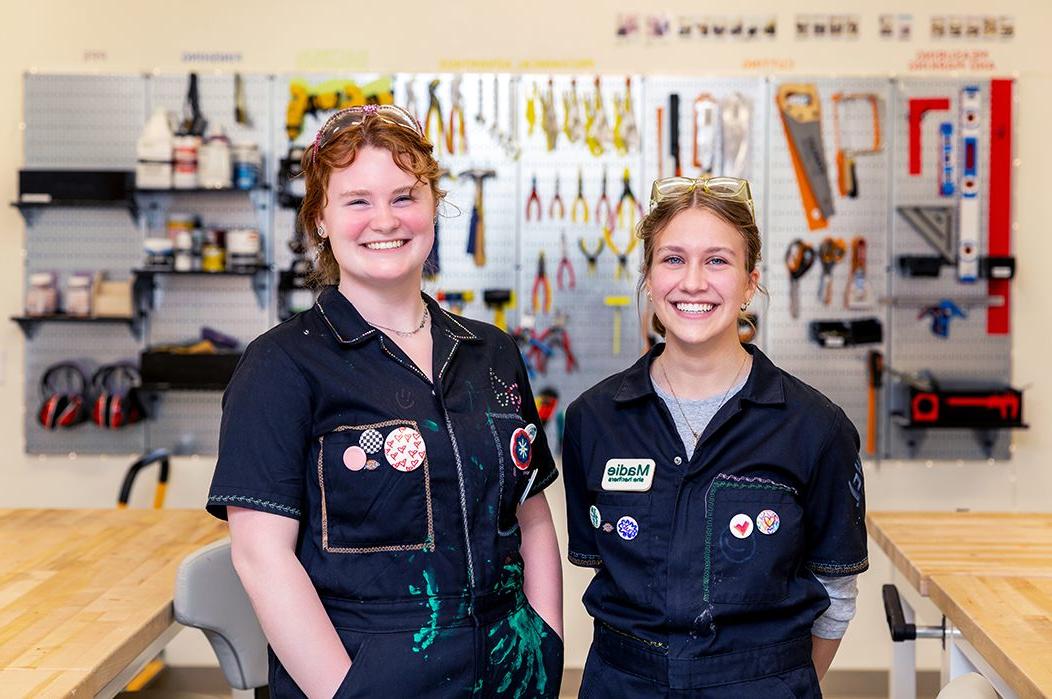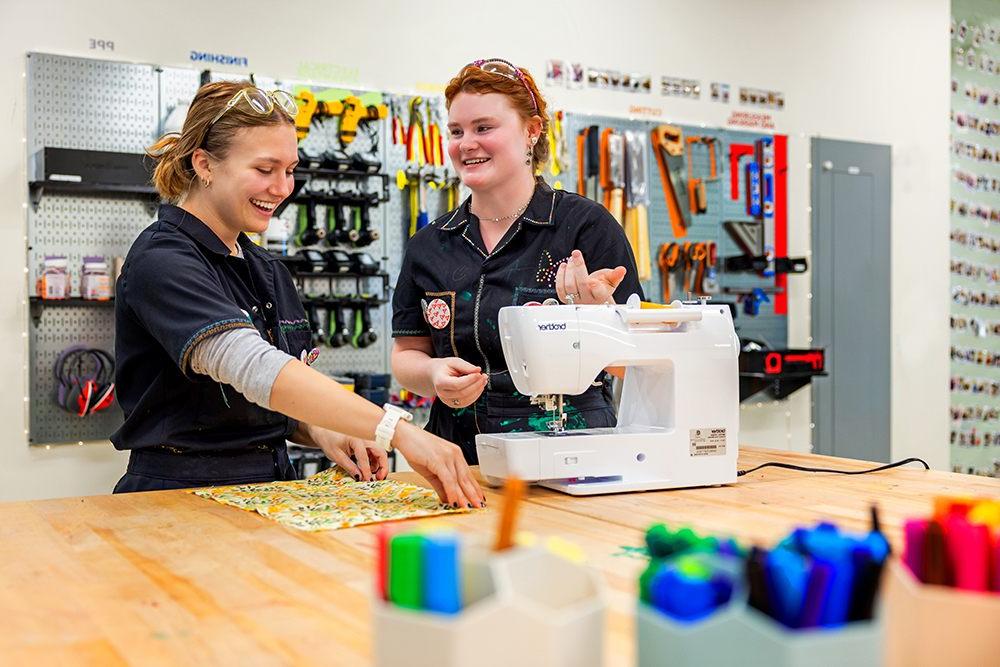At BC’s Hatchery, a Himalayan adventure is born
When she’s not in class, eating, or sleeping, chances are you’ll find engineering-major Maggie Hynes ’25 at the Hatchery, Boston College’s newest makerspace, where she works as the laser and vinyl cutting team lead. Whether she’s helping another student with a project, working on a personal creation, or catching up with friends and coworkers, this specific corner of campus has become her second home.
It’s also taken her and fellow Hatchery employee Madie Simmons ’25, a computer science major, on the adventure of a lifetime. This summer, through the connections of their former Hatchery supervisor Madison Dunaway, both students spent two months living in Thimphu, Bhutan, where they worked as interns for a fab lab makerspace and participated in an international digital fabrication conference—all while surrounded by some of the most stunning landscape on earth.
“It’s gorgeous,” said Simmons. “We did a lot of hiking: you’re up in the mountains, the clouds are below you, and you’re looking down at rolling hills everywhere. I’d love to go back.”
Simmons and Hynes were among a dozen interns hired to support the staff at the recently opened Jigme Namgyel Wangchuck Super Fab Lab, part of an international network of 2,500 fab labs begun by MIT professor Neil Gershenfeld in the early 2000s. The goal of all fab labs is to empower ordinary people to make almost anything themselves—whether it’s a farming tool, medical equipment, or a sign for a business. A “super” fab lab, of which there are only two, contains even more heavy duty machinery, including the necessary equipment to build a regular fab lab from scratch.
Scenes from Bhutan
In its efforts to modernize and retain younger workers, the government of Bhutan has opened five maker spaces throughout the country in recent years and is encouraging citizens to use technology to solve problems in the community and preserve Bhutanese culture. Many of the lab users Simmons and Hynes observed were working on farming solutions, including a device to protect chili crops from wildlife. Another group was working on a project to design and fabricate looms that could be used by people of all ages to weave traditional Bhutanese textiles.
In the weeks leading up to FAB23, an international fab lab conference and symposium, Simmons and Hynes were busy helping lab users finalize projects while also working on a challenge of their own: their supervisor wanted them to design and manufacture name tags—using sustainable materials—that could also be used as souvenirs for conference attendees. After testing different methods and designs, they settled on laser cut cardboard tags, and helped train their fellow interns to assist them in production.
“We ended up making nearly 800 name tags,” recalled Simmons. “We do a lot of laser cutting at the Hatchery but it’s much more small scale, so it was really interesting to see this process through from start to finish.”

Simmons (left) and Hynes at the Hatchery. (Caitlin Cunningham)
The conference itself spanned two weeks and showcased projects by fab lab users in Bhutan centered around the theme “designing resilient futures.” Shortly before opening day, Simmons and Hynes were asked to create and run a workshop that would appeal to younger attendees, so they reimagined an activity that has become an annual BC Hatchery tradition: screen printing t-shirts with original designs.
“Every year the Hatchery collaborates with social justice organizations on campus to host a screen printing workshop on the quad,” explained Hynes. “It’s an easy entryway into something that’s really cool to do, but you need no experience to do it, so we thought ‘Let’s do it in Bhutan!’”
Their contributions both before and during the conference earned high praise from fab lab supervisor Namgyal Gyaltshen, who lauded their professionalism and technical expertise as well as their contagious enthusiasm.
“By the end of the internship, the rest of my team were looking [to] the two of them as leaders to coordinate and organize the interns for the various tasks that were assigned to them,” she said. “Their positive influence on the team morale cannot be overstated.”

Simmons and Hynes came to BC with sewing skills, but the rest they learned on the job. (Caitlin Cunningham)
Back on campus this fall, Simmons and Hynes are hard at work on new projects at the Hatchery—some pertaining to their studies (Hynes first learned about the makerspace during a collaborative project between engineering majors and the Campus School) and some just for fun (Simmons is currently in a crocheting “era”). The staff and resources in the bright and airy space support both by providing materials, training, and a friendly environment to anyone who’s interested in creating.
“I think the perception of a makerspace is typically one where you see all men just 3-D printing or soldering stuff and we do have that, but I think this space is just as valuable to business students as it is to future teachers or STEM majors,” said Hynes. “My friend is an early education major and I keep telling her, ‘You need to get in here and be crafty. I know you want to. This is the space for it.’”
